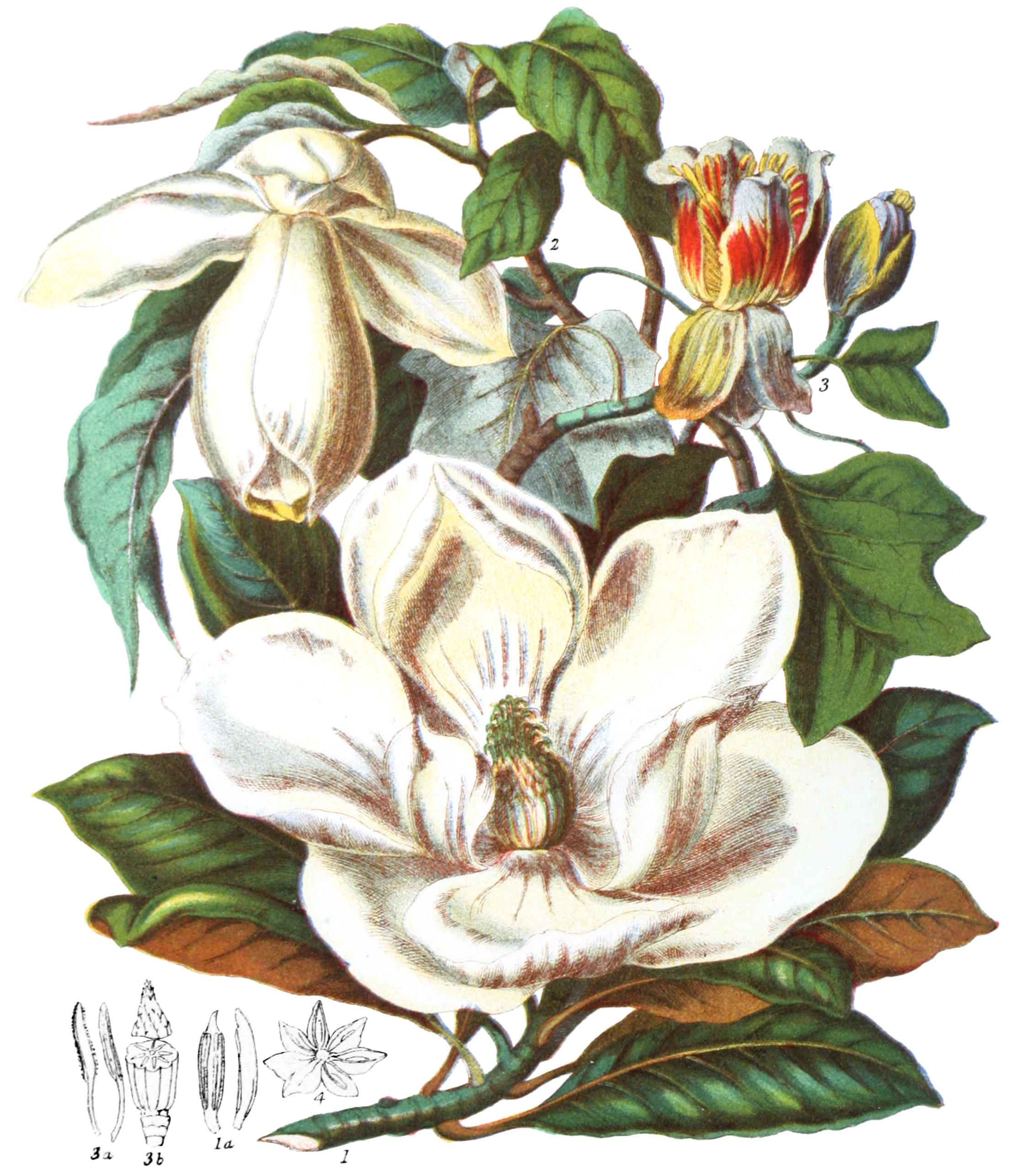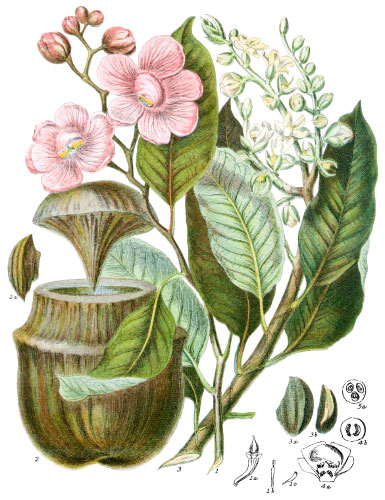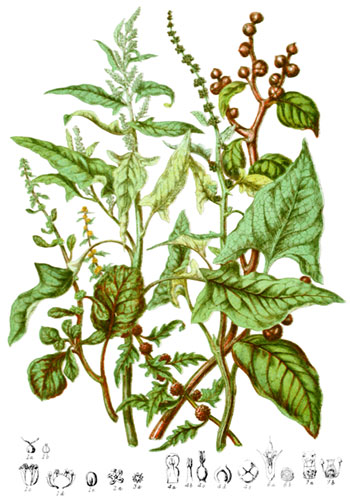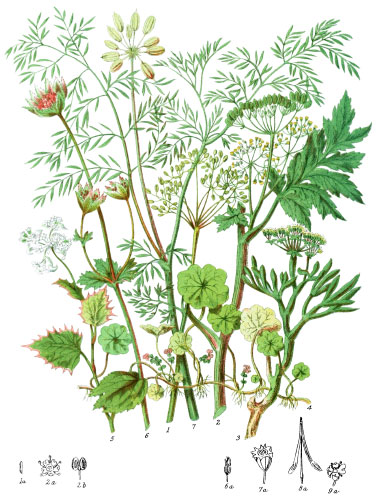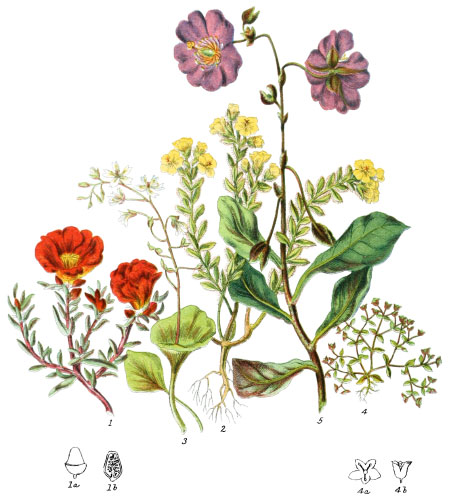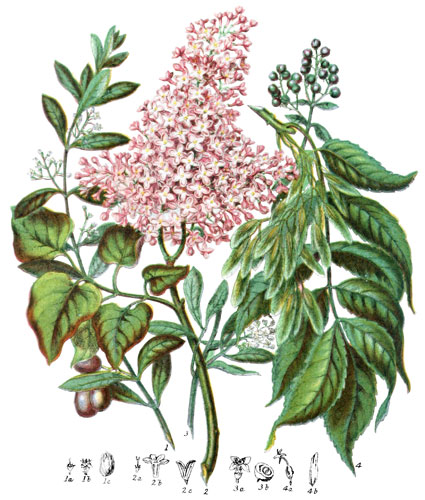Key characteristics
This Order is composed entirely of trees or shrubs, no herbaceous plants. The leaves are generally of a thick, leathery substance, grow alternately, and are jointed on the stem. The rolled-up stipules, which grow around the base of the leaf-buds, soon fall off, their place being marked by an annular scar on the branch. The calyx has either three or six sepals, which drop off when the flower expands. The petals are three or more in several rows. Stamens numerous, with long anthers on the filaments, placed below the pistil, which is composed of many short styles and simple stigmas. Fruit either dry or succulent, containing several seed-vessels, which are either entire or gaping, distinct or partially connected, often collected in a long-shaped cone. In a few plants the seed-vessels are circular, in the form of a star, as in Illicium, Tasmannia, and others.
The general character of these plants is to have fragrant flowers, and bitter aromatic properties; none can be said to bear eatable fruits, although that of Illicium anisatum has a pleasant aromatic flavour: other species yield an useful oil from the fruit. Kalm ascertained the presence of these trees by their odoriferous scent at a distance of three miles, when the wind was favourable. Magnolia was so named after Pierre Magnol, a celebrated botanist of Montpelier.
Select plants in this order
Not all plants listed are illustrated and not all plants illustrated are listed.
- Magnolia grandiflora (1) is one of the noblest of evergreen trees, with splendid foliage, and large, highly-odorous flowers.
- Liriodendron tulipifera (3) is a lofty tree in the forests of North America, and is now become naturalized in European gardens, being much esteemed for its singular form of leaf, and elegant tulip-like flowers. In the south of France, and in Italy, it is frequently planted in public walks and avenues; the wood is used in America for canoes.
- Talauma (2) is a genus, so called by the natives of South America; it consists of magnificent trees and shrubs, resembling Magnolias in many respects, and belongs also to Java and the Antilles.
- Magnolia pumila is well known in our greenhouses for the extreme fragrance of its small, brownish flowers;
- Magnolia conspicua grows in Japan and China, and is admired here for its large white flowers, which appear before the leaves, on the grey branches. Some species of this genus in the United States yield an aromatic infusion from the green cones, which is useful in medicine.
- Magnolia glauca is the swamp sassafras, or beaver tree, of North America; the bark rivals that of Chichona in bitter, aromatic properties.
- Aromadendron elegans, of Java, bears fruit in a round cone; it is remarkable for the fragrance of its blossoms and aromatic, bitter bark: its timber is also valuable in that country.
- Michelia is known in several species in Java.
- Michelia Doltsopa is one of the finest trees in Nepal, yielding an excellent, fragrant wood, much used there for building houses.
- Michelia champaca has sweet-scented, orange-colured flowers, which the natives of India form into garlands for the head, and employ in their religious ceremonies.
- Drymis Winteri, a native of Magellan, yields the celebrated Winter’s bark, which was found so beneficial in a restorative to the crew of Captain Winter’s ship, who accompanied the circumnavigator Drake; the aromatic leaves and bark are said to be useful condiments in the cold climate of Magellan Straits.
- In Brazil the aromatic bark of Drymis granatensis is much esteemed as a spice and a tonic, and Drymis axillaris of New Zealand has equally useful properties.
- Illicium anisatum (4) has the same powerful aromatic quality, and is used by the Chinese as a spice in their food; the fruit yields an useful oil.
- Illicium religiosum is considered a sacred plant by the Japanese, who place garlands and branches of it before their idols, and on the graves of their departed friends; the fragrant seeds are burnt as incense in their temples.
- Tasmania aromatica yields a fruit that is occasionally used as pepper by the settlers in Tasmania.
Locations
The chief centre of this tribe is doubtless North America, where the woods, the swamps, and the sides of the hills abound with various species; thence they extend to Asia. The seven species of Michelia in Nepal form a link between the floras of North America, China, and Japan. No species have yet been found on the continent of Africa, or in any of the adjoining islands, and none belong to Europe.
Legend
- Magnolia grandiflora, Laurel-leaved Magnolia. Carolina.
- Stamens.
- Talauma Candollii. Java.
- Liriodendron tulipifera, Tulip-tree. North America.
- Stamens.
- Pistil.
- Illicium anisatum, Star-anise. China.
- Seed-vessel.*
*4a was not pictured in the original illustration.
Explore more
Posters
Decorate your walls with colorful detailed posters based on Elizabeth Twining’s beautiful two-volume set from 1868.
Puzzles
Challenge yourself or someone else to assemble a puzzle of all 160 botanical illustrations.
